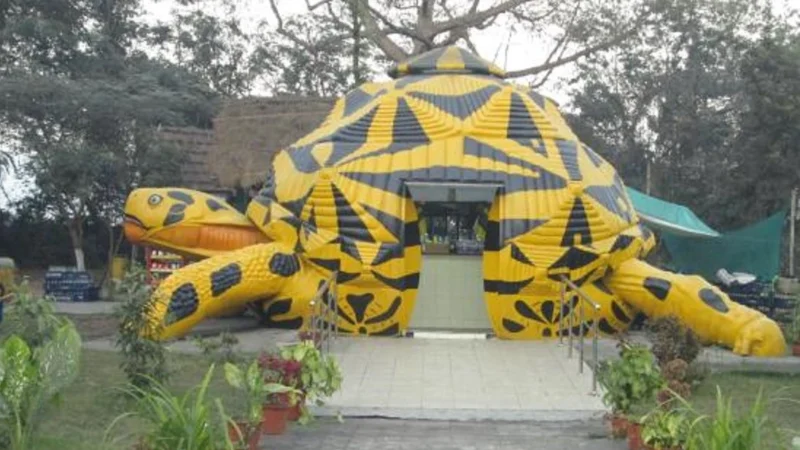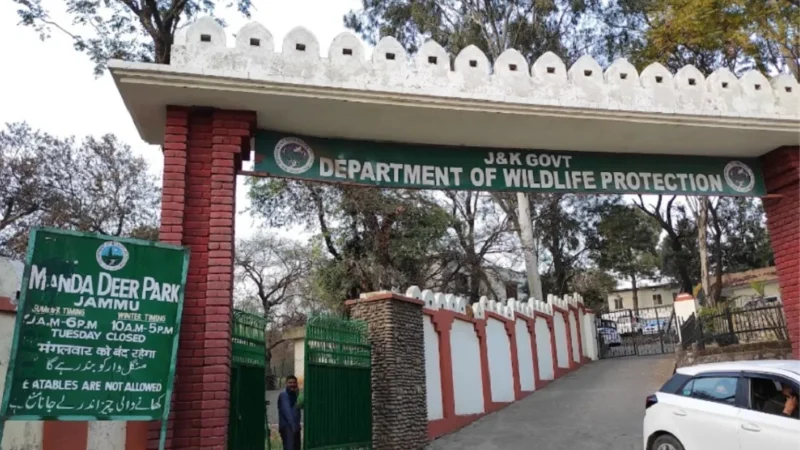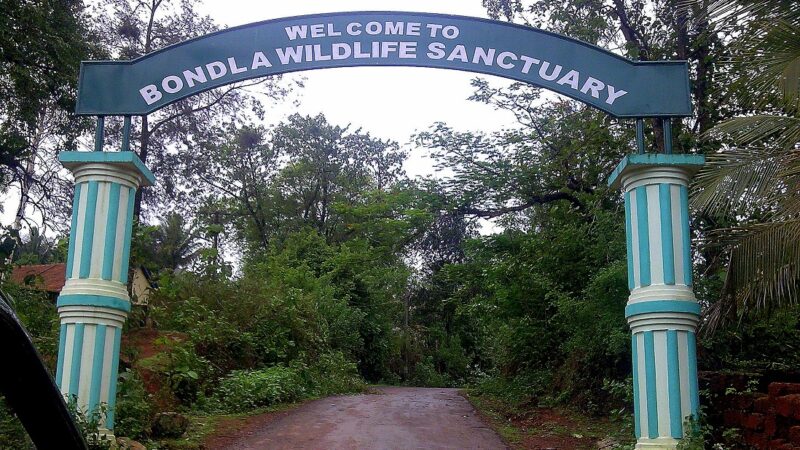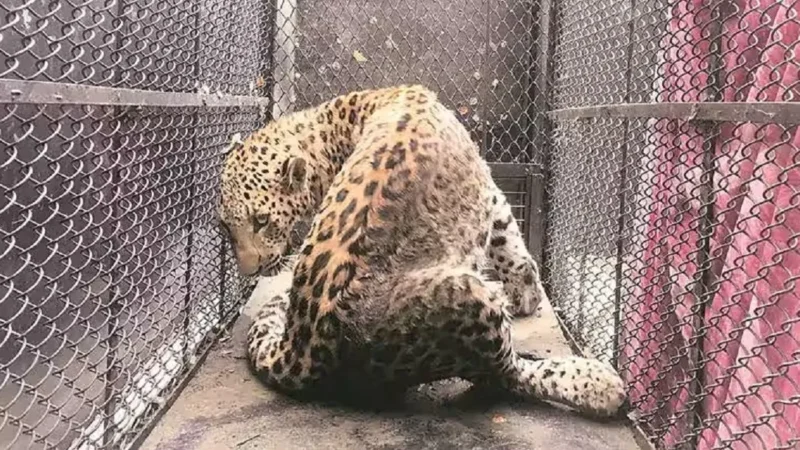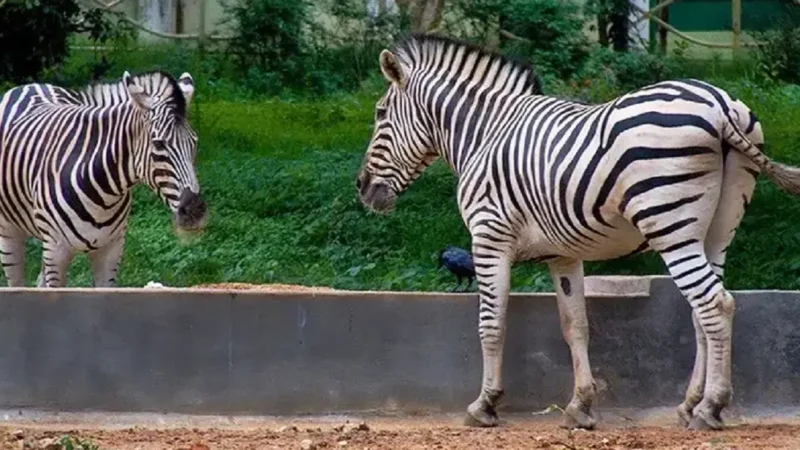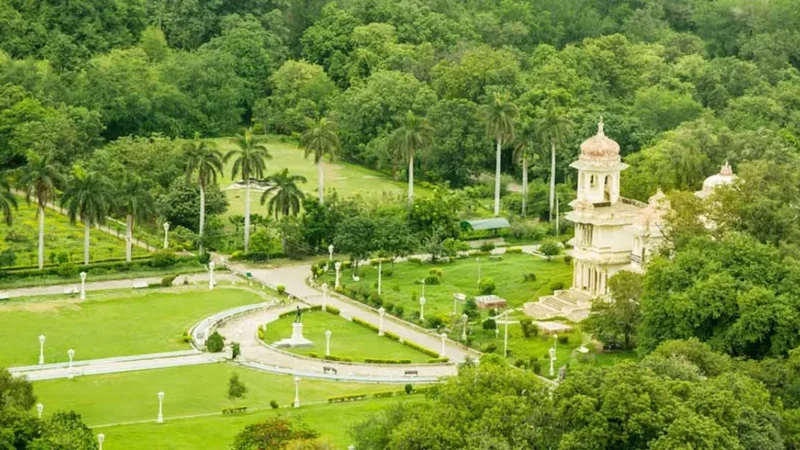Zoo in Darjeeling – Padmaja Naidu Himalayan Zoological Park | Timing, Ticket, Flora and Fauna

Table of Contents
ToggleDarjeeling Zoo
Welcome to a captivating adventure through the heart of the majestic Himalayas, where nature’s splendor and wildlife intertwine in perfect harmony. Our journey begins at the esteemed Padmaja Naidu Himalayan Zoological Park, an oasis of biodiversity nestled in the lap of the breathtaking Darjeeling town in India.
Named after the illustrious Padmaja Naidu, a distinguished freedom fighter and the former governor of West Bengal, this park is a tribute to her indomitable spirit and love for nature.
Our blog aims to delve into the enchanting world of this unique zoological park, presenting a glimpse of its inhabitants, conservation efforts, and the serene surroundings that make it a must-visit destination for wildlife enthusiasts, nature lovers, and curious souls seeking an escape into the wild.
History of the Darjeeling Zoo
The Padmaja Naidu Himalayan Zoological Park (the Darjeeling Zoo) was established in 1958 as a joint venture between the Government of India and West Bengal. The zoo’s first Director and founder was Dilip Kumar Dey, who belonged to the Indian Forest Service. The zoo was originally established to study and preserve Himalayan fauna.
In 1960, the zoo received a pair of Siberian tigers as a gift from Soviet Premier Nikita Khrushchev. These tigers were the first of their kind to be exhibited in India. Over the years, the zoo has expanded its collection to include a variety of other animals, including snow leopards, red pandas, Himalayan tahrs, blue sheep, Himalayan monals, grey peacock pheasants, Himalayan salamanders, blood pheasants, and satyr tragopans.
The zoo is particularly famous for its conservation breeding programs for the red panda, Himalayan salamander, Tibetan wolf, and snow leopard. The zoo has successfully bred some of these endangered species, and its work has helped ensure their survival.
Darjeeling Zoo Location
Address: Padmaja naidu Himalayan zoological park, Jawahar Parbat, Darjeeling, West Bengal 734104, India.
Darjeeling Zoo Ticket
The ticket price for the Padmaja Naidu Himalayan Zoological Park (also known as the Darjeeling Zoo) is as follows:
- Indian and SAARC citizens: ₹20
- Foreign citizens: ₹50
- Children below 6 years: Free
- Camera: ₹10
You can purchase tickets at the zoo entrance.
Darjeeling Zoo Timing
The Padmaja Naidu Himalayan Zoological Park (also known as the Darjeeling Zoo) is open daily from 8:30 AM to 4:30 PM, except for Thursdays.
Best time to visit Darjeeling Zoo
The best time to visit the Darjeeling Zoo is spring (March to June) and autumn (September to January). The weather is mild and pleasant during these months, with clear skies and little to no rain. This makes it ideal for spending time outdoors and exploring the zoo.
The summer months (July and August) can be quite hot and humid in Darjeeling, making it uncomfortable to be outside for long periods. Additionally, the monsoon season runs from July to September, and heavy rains can make it difficult to get around the zoo.
The winter months (December to February) can also be quite cold in Darjeeling, with temperatures often dropping below freezing. This can make it uncomfortable to spend time outdoors, and some of the animals may be less active during this time.
Layout of the Darjeeling Zoo
The Padmaja Naidu Himalayan Zoological Park (also known as the Darjeeling Zoo) is located on a hillside, and its layout reflects this. The zoo is divided into two main sections: the upper section and the lower section.
The upper section of the zoo is home to larger animals, such as snow leopards, red pandas, Himalayan tahrs, and blue sheep. The lower section of the zoo is home to smaller animals, such as Himalayan monals, grey peacock pheasants, Himalayan salamanders, blood pheasants, and satyr tragopans.
The zoo also has many other exhibits, including a reptile house, an aquarium, and a bird aviary.
Here is a general layout of the Darjeeling Zoo:
Upper section:
- Snow leopards
- Red pandas
- Himalayan tahrs
- Blue sheep
- Himalayan monals
- Grey peacock pheasants
Lower section:
- Himalayan salamanders
- Blood pheasants
- Satyr tragopans
- Reptile house
- Aquarium
- Bird aviary
The zoo has many other facilities, such as a cafeteria, a souvenir shop, and a children’s playground.
Fauna of Darjeeling Zoo
Some of the most notable animals that can be found at the zoo include:
Animals of Darjeeling Zoo
The Padmaja Naidu Himalayan Zoological Park is home to various fauna, including many endangered species. Some of the most notable animals that can be found at the zoo include:
- Snow leopard
- Red panda
- Himalayan tahr
- Blue sheep
- Himalayan monal
- Grey peacock pheasant
- Himalayan salamander
- Blood pheasant
- Satyr tragopan
Birds of the Darjeeling Zoo
The Darjeeling Zoo is home to various birds, including many endangered species. Some of the most notable birds that can be found at the zoo include:
- Himalayan monal
- Grey peacock pheasant
- Himalayan blood pheasant
- Satyr tragopan
- Kalij pheasant
- Himalayan snowcock
- Himalayan pheasant
- Oriental white-eye
- Rufous-vented yuhina
- Grey-hooded warbler
- Blue-throated barbet
Reptiles of Darjeeling Zoo
The Darjeeling Zoo is home to three species of reptiles:
- Indian sand boa (Eryx conicus)
- Russell’s viper (Daboia russelii)
- Indian rock python (Python molurus)
These reptiles are all native to the Himalayan region and play an essential role in the ecosystem. The Indian sand boa is a non-venomous snake that preys on small mammals and lizards. The Russell’s viper is a venomous snake that preys on various animals, including rodents, birds, and other snakes. The Indian rock python is the most giant snake in India and preys on multiple animals, including mammals, birds, and reptiles.
Amphibian at Darjeeling Zoo
Only one amphibian species is at the Darjeeling Zoo: the Himalayan salamander (Tylototriton verrucosus). It is a small salamander found in the Himalayas’ high altitudes. Himalayan salamanders are nocturnal animals that spend most of their time hiding under rocks and logs. Their diet consists of a variety of insects and other small invertebrates.
The Himalayan salamander is an endangered species, and the Darjeeling Zoo plays a vital role in its conservation. The zoo has a breeding program for the salamander, and it has released some of the captive-bred salamanders back into the wild.
Flora of Darjeeling Zoo
The Padmaja Naidu Himalayan Zoological Park is home to a rich and diverse flora. The zoo is located at a high altitude, so the growing plants are well-adapted to the cold mountain climate.
Some of the most common plants found at the Darjeeling Zoo include:
- Oak trees (Quercus spp.): Oak trees are a dominant feature of the Darjeeling landscape. They are slow-growing trees with large, sturdy branches. Oak trees provide an important habitat for many animals, including birds, squirrels, and insects.
- Alder trees (Alnus spp.): Alder trees are fast-growing trees often found along riverbanks. They have a distinctive, silvery bark and produce small, cone-shaped flowers. Alder trees are an essential food source for many animals, including birds and fish.
- Birch trees (Betula spp.): Birch trees are slender trees with white bark and delicate leaves. They are often found in mixed forests with other types of trees. Birch trees are an essential food source for many animals, including insects, birds, and mammals.
- Rhododendrons (Rhododendron spp.): Rhododendrons are flowering shrubs and trees in many parts of the Himalayas. They produce various colorful flowers, including reds, pinks, and purples. Rhododendrons are an important food source for many animals, including birds, bees, and butterflies.
- Ferns (Pteridophyta): Ferns are a diverse group of plants in many parts of the world. They are often found in moist, shady areas. Ferns are an important food source for many animals, including insects and mammals.
In addition to these common plants, the Darjeeling Zoo is also home to various other plants, including orchids, cacti, and succulents. The zoo’s botanical garden is a great place to learn about the Himalayas’ flora and see some fantastic plants up close.
Fun activities at Darjeeling Zoo
The Darjeeling Zoo is an excellent place for people of all ages. Here are some fun activities that you can do at the zoo:
- See the animals up close. The Darjeeling Zoo is home to various animals, including many endangered species. You can see snow leopards, red pandas, Himalayan tahrs, blue sheep, Himalayan monals, grey peacock pheasants, Himalayan salamanders, blood pheasants, and satyr tragopans.
- Learn about the animals. The Darjeeling Zoo has a variety of educational exhibits that can teach you about the animals and the Himalayas. You can learn about the animals’ habitats, diets, and behaviors.
- Take a walk through the zoo. The Darjeeling Zoo is a beautiful place to take a walk. The zoo is on a hillside, offering stunning views of the surrounding mountains.
- Have a picnic lunch. The Darjeeling Zoo has several picnic areas to enjoy lunch with your family and friends.
- Take a ride on the zoo train. The Darjeeling Zoo has a train that takes visitors around the zoo. This is a great way to see the animals and learn about the zoo.
- Visit the zoo’s gift shop. The Darjeeling Zoo has a gift shop where you can buy souvenirs and gifts for your family and friends.
How to Reach Darjeeling Zoo
There are a few ways to reach Darjeeling Zoo:
- By Road:
The Darjeeling Zoo is located about 3 kilometers from the Darjeeling town center. You can reach the zoo by taxi or auto rickshaw. There is also a bus service that runs from the town center to the zoo.
- By Train:
The nearest railway station to Darjeeling is the Darjeeling Railway Station. The railway station is located about 2 kilometers from the Darjeeling town center. You can take a taxi or auto rickshaw from the railway station to the zoo.
- By Air:
The nearest airport to Darjeeling is the Bagdogra Airport. The airport is located about 90 kilometers from Darjeeling. You can take a taxi or bus from the airport to Darjeeling.
- Once you arrive in Darjeeling:
The Darjeeling Zoo is located on Lebong Road, about 3 kilometers from the town center. You can reach the zoo by taxi, auto rickshaw, or bus.
Places to Visit near Darjeeling Zoo
There are many places to visit near Darjeeling Zoo, including:
- Darjeeling Himalayan Railway (DHR): The DHR is a UNESCO World Heritage Site and a popular tourist attraction. It is a narrow gauge railway that runs from Darjeeling to Siliguri. The DHR offers stunning views of the Himalayas and is a great way to experience the region’s natural beauty.
- Tiger Hill: Tiger Hill is a popular viewpoint that offers stunning views of Mount Kanchenjunga, the third highest mountain in the world. Tiger Hill is also a popular place to watch the sunrise.
- Batasia Loop: Batasia Loop is a spiral railway loop that offers stunning views of the Himalayas and the Darjeeling tea gardens. Batasia Loop is also a popular spot for photography.
- Rock Garden: Rock Garden is a beautiful garden that is built on a rocky hillside. The garden is home to various plants, flowers, waterfalls, and ponds. Rock Garden is a great place to relax and enjoy the natural beauty of Darjeeling.
- Happy Valley Tea Estate: Happy Valley Tea Estate is one of the most famous tea estates in Darjeeling. The estate offers tours and tastings, where you can learn about the tea making process and sample some of the finest teas in the world.
- Padmaja Naidu Himalayan Zoological Park (Darjeeling Zoo): The Darjeeling Zoo is home to various animals, including many endangered species. The zoo is a great place to learn about the animals of the Himalayas and to see some of these amazing animals up close.
In addition to these places, there are many other things to see and do in Darjeeling, such as visiting monasteries, temples, and markets. Darjeeling is also a great place to go trekking and enjoy the Himalayas’ natural beauty.

